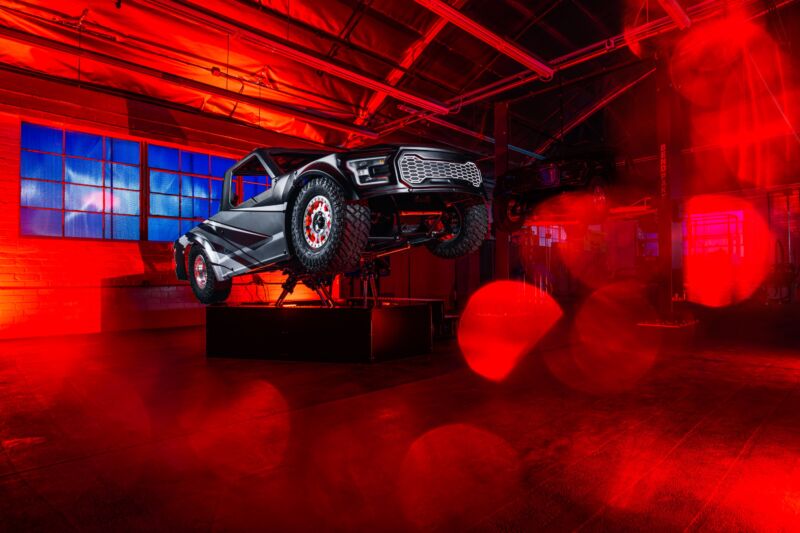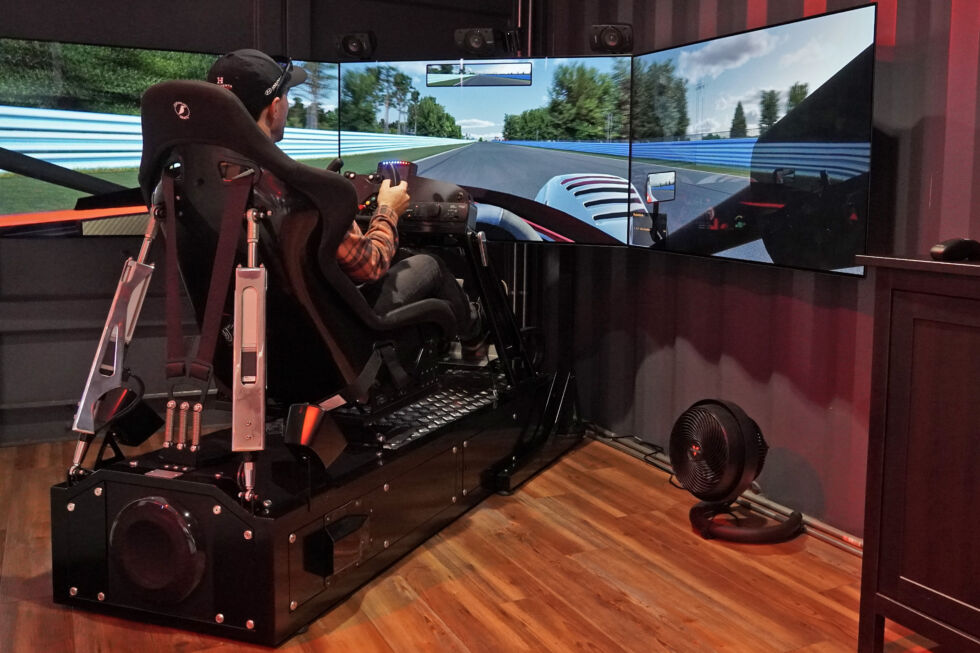
CXC Simulations
Racing simulators keep evolving as graphics get more and more realistic while physical motion systems innovate new ways to mimic the sensation of driving a real race car. The task of rendering the controlled environment of a well-known racing circuit makes most modern sims a bit easier to understand, and the physical footprints of screens, seats, VR goggles, and motion systems continue to shrink. But now, leading developer CXC Simulations has unveiled a massive sim that offers a more embodied experience of off-road racing. The project began in partnership with Norwegian Cruise Line, but CXC will now sell the Motion Pro Truck to the general public, albeit at a starting price of $600,000.
I visited CXC’s headquarters in Los Angeles to learn more about how the wild physicality of high-speed off-roading translates to sim racing. After all, the company’s most popular Motion Pro II sim setup typically features a compact racing seat, steering wheel, and pedals atop a small base platform, with the choice of one or three screens or a set of VR goggles. The Motion Pro II has proved popular since founder Chris Considine originally launched CXC out of his garage in 2007, to the point that his company now works with professional racing teams, enthusiasts, federal government agencies, the military, and law enforcement agencies on six continents.
I tested CXC’s Motion Pro II, which is equipped with three 55-inch screens, and Considine loaded me into a Radical SR8 racecar at the Watkins Glen circuit. The realistic pedals and steering wheel feedback, as well as subtle tilting at the seat of my pants and seatbelts that tightened under hard braking, all contributed to a fun experience. And as someone who typically suffers from motion sickness, I never felt any nausea creeping in—while appreciating how much the wraparound triple screens contributed to a sense of speed that other single-screen sims entirely lack.

Michael Teo Van Runkle
Despite never having driven at Watkins Glen, much less in a Radical, my skills began to improve noticeably after just a few laps. The Motion Pro II toed the line between gaming and training, as I witnessed my mind adapting to the divergent inputs, though I can still report that sim driving still can’t quite match all the realities of driving a real car around a real track at high speed.
The Motion Pro Truck sat in a wide-open space behind a shipping container next to CXC’s assembly line, where I spotted about 15 Motion Pro IIs in various stages of production. The sheer size surprised me since I knew the truck needed to fit on a cruise ship, so I asked Considine how the project of building a race truck sim came about in the first place.
Putting an F1 car on a cruise liner
“We’ve been building simulators for Norwegian [Cruise Line] for a little over 10 years now,” he explained. “Every year, they typically order eight of our regular Motion Pro II simulators, and then what they call a halo project, which is something that is just so bonkers and so cool that everybody has to take pictures and share it on social and do all that sort of stuff,” Considine said.
Previous installations included a sim built into a real Williams F1 car in 2009, then whole race car bodies that moved on motion systems. When Norwegian asked CXC to outdo those previous builds, Considine envisioned the truck as a concept to attract more spectators. And the sheer size factor surely succeeds in that regard.

Michael Teo Van Runkle
There are no shrunken proportions here, as CXC sources a real Pro Lite chassis from the Lucas Oil Off-Road Racing Series for the truck itself. In total, the truck can move through six degrees of freedom, with about three feet of travel in every direction. The setup weighs about 3,000 pounds (1,360 kg) and runs on 400 V three-phase power, with a transformer the size of a mini-fridge nearby, next to a small standalone screen that initiates the sim and allows spectators to see what the driver experiences.
